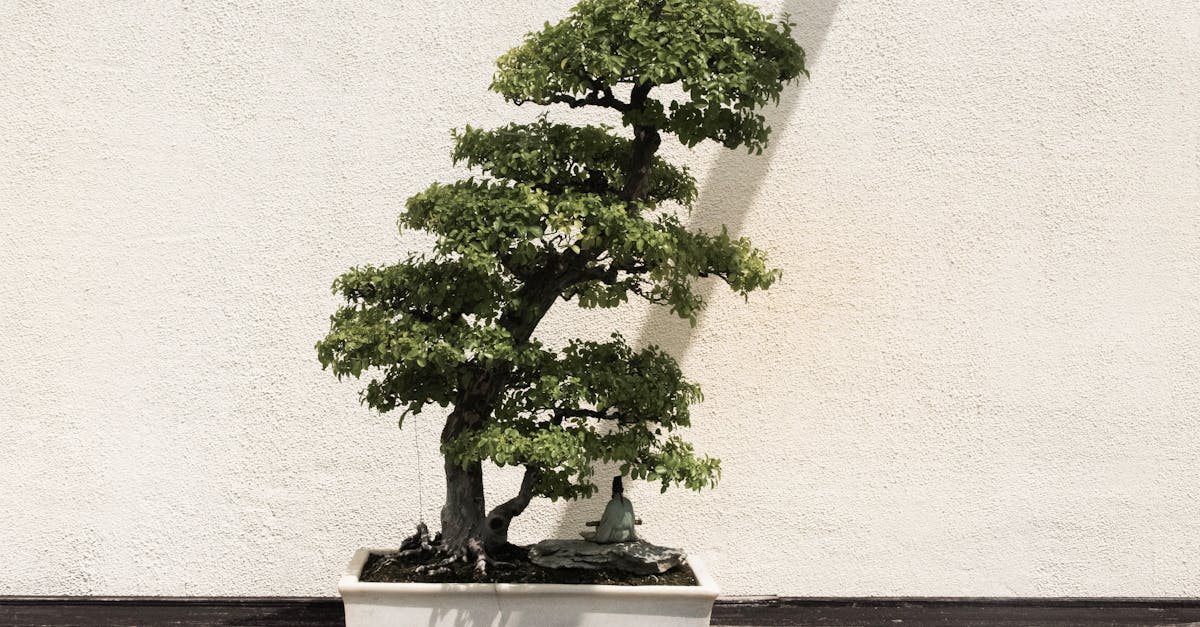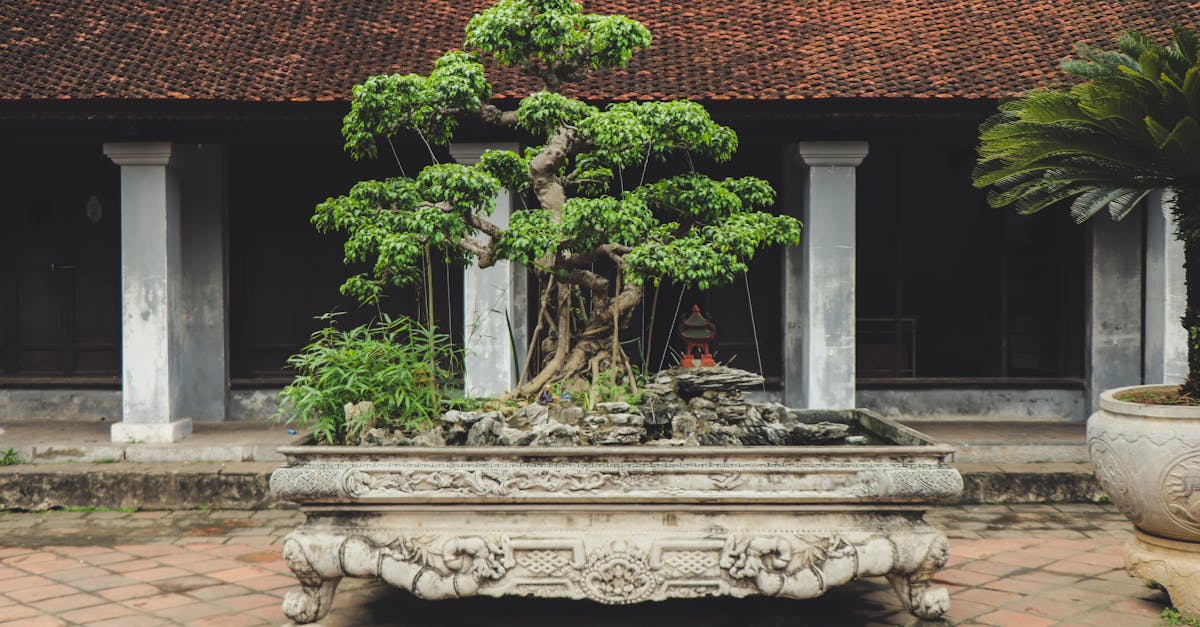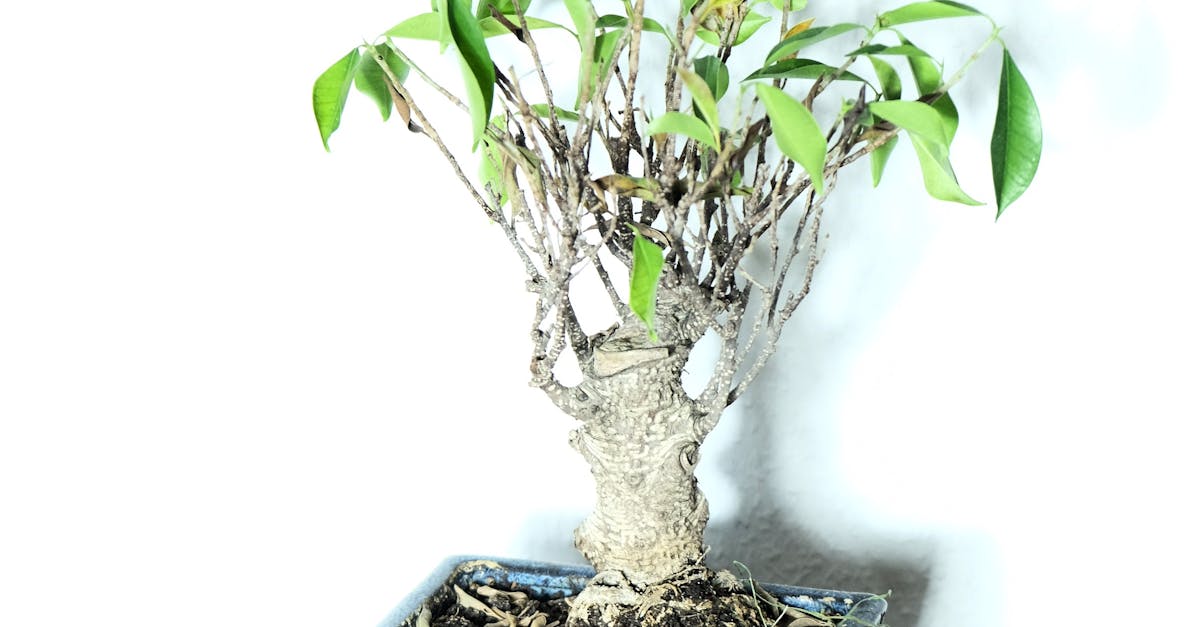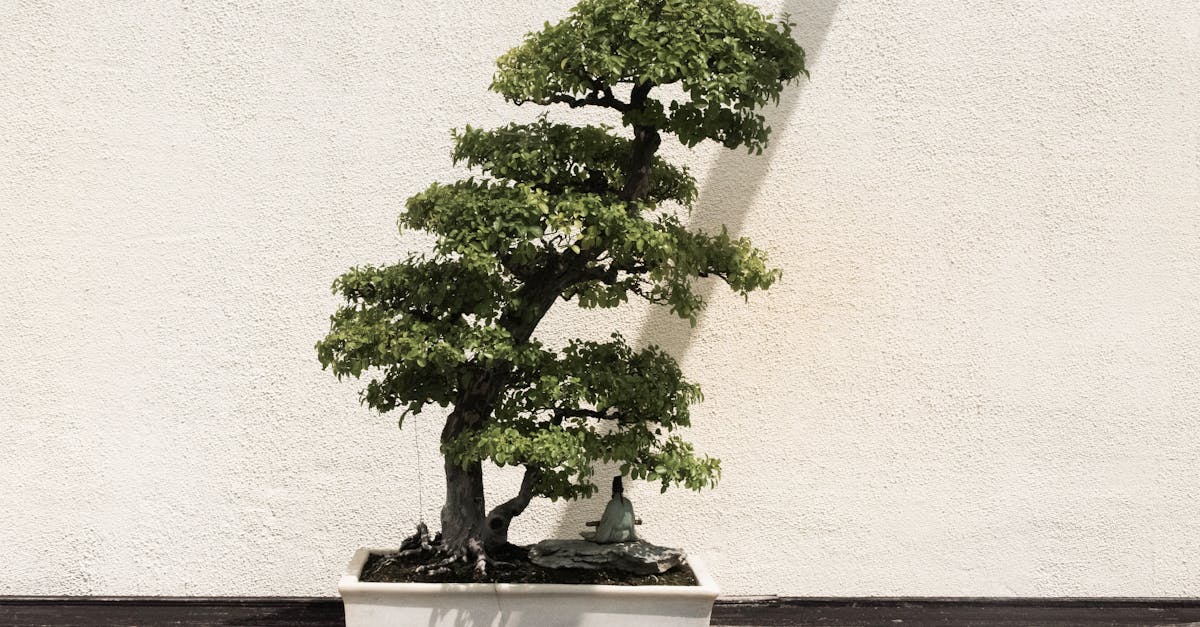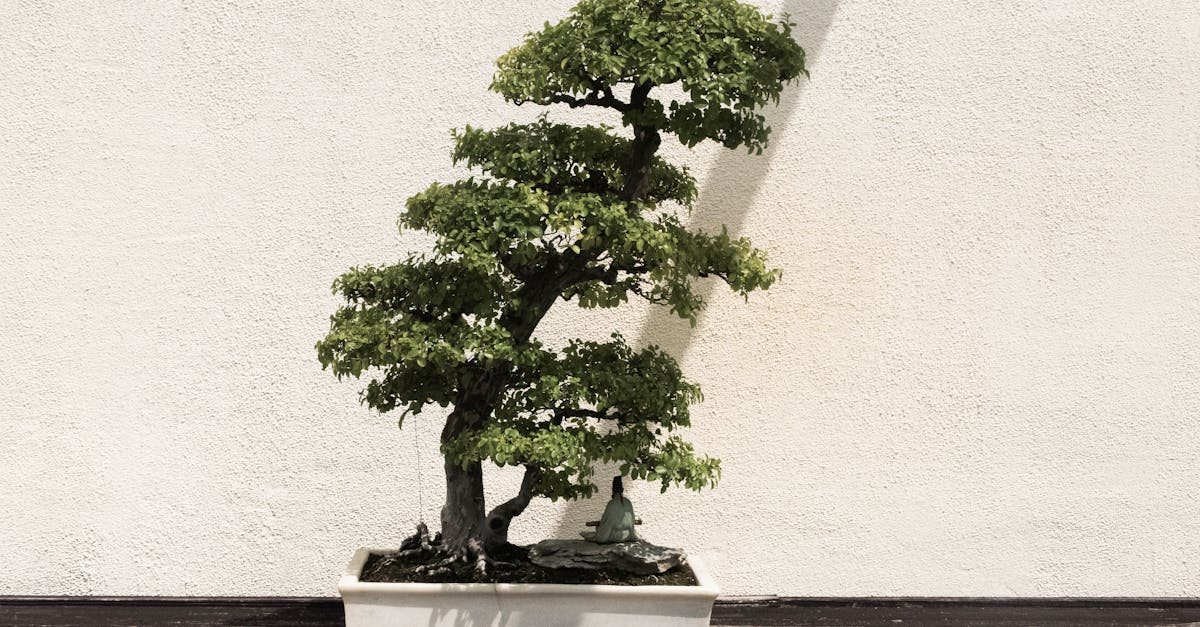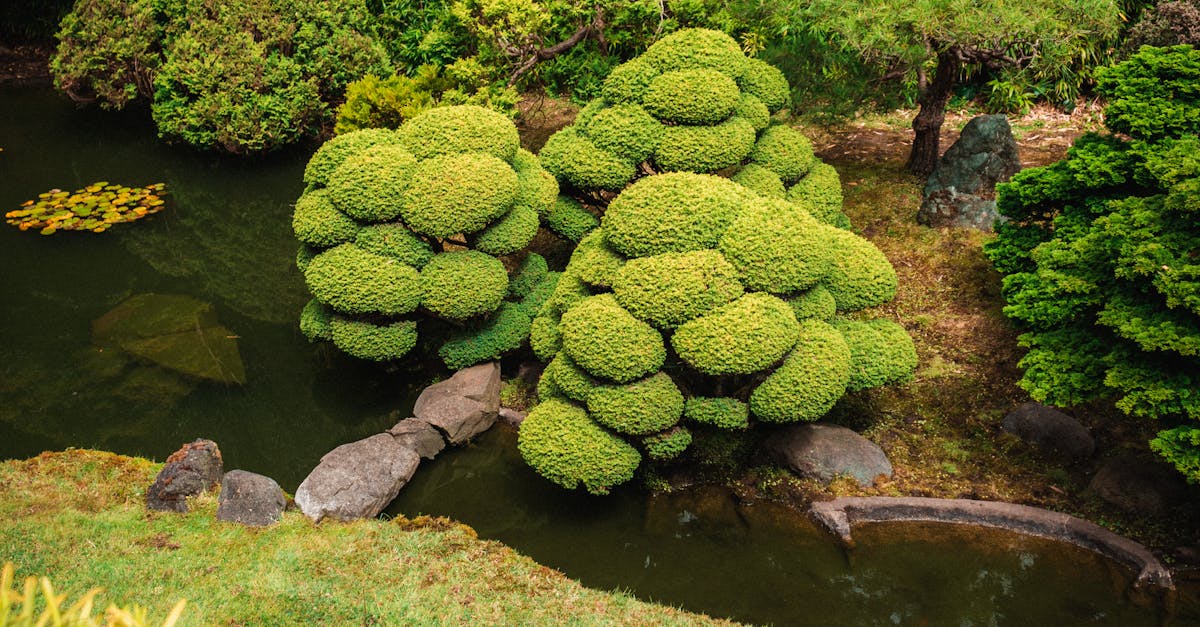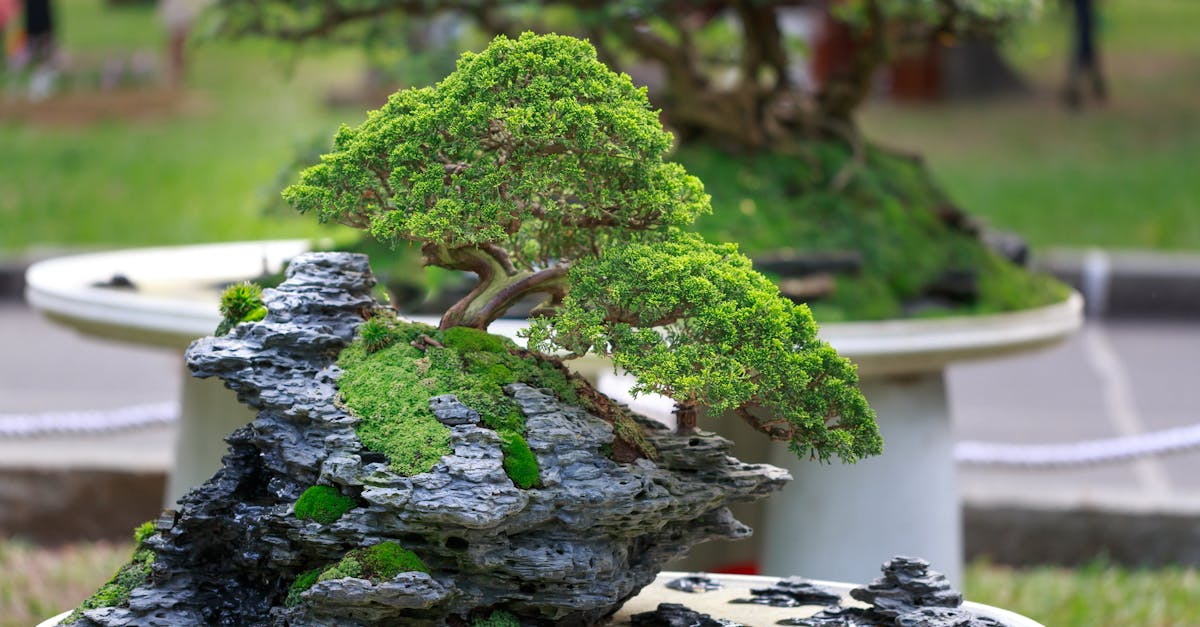Unveiling the Mystery: Understanding Leaf Drop in Bonsai Trees
Your bonsai, a miniature representation of nature’s grandeur, is a living work of art. However, when leaves start to fall, it’s a cause for concern. Understanding the reasons behind leaf drop is crucial for preserving the health and beauty of your bonsai.
Many factors can contribute to leaf drop in bonsai trees, including improper watering, lack of sunlight, and pest infestations. Overwatering can lead to root rot, suffocating the plant and causing leaf loss, while underwatering stresses the plant, leading to dehydration and leaf drop. Insufficient sunlight hinders photosynthesis, depriving the tree of energy and nutrients essential for leaf retention. Pests, such as aphids and spider mites, can damage leaves, causing them to turn yellow, wilt, and eventually drop.
To prevent leaf drop, it’s essential to provide your bonsai with optimal conditions. Water thoroughly but allow the soil to dry out slightly between watering to avoid overwatering. Ensure your bonsai receives ample sunlight, either by placing it outdoors or supplementing natural light with artificial sources. Regularly inspect your bonsai for pests and treat infestations promptly using appropriate methods.
1. Why is My Bonsai Dropping Leaves?
Bonsai trees, with their delicate foliage and intricate forms, captivate plant enthusiasts worldwide. However, when leaves start to drop, it can be alarming. Understanding the underlying causes is crucial for preserving the health and beauty of your miniature tree.
Overwatering is a common culprit behind leaf drop in bonsai. Bonsai trees prefer well-drained soil that allows excess water to escape freely. When the soil remains soggy, the roots can suffocate due to lack of oxygen, leading to root rot. This compromised root system can no longer effectively absorb water and nutrients, causing leaves to wilt and drop.
Underwatering, while less common, can also trigger leaf drop. Bonsai trees, like all plants, require regular watering to maintain hydration and support growth. However, excessive drying of the soil can cause the plant to become stressed, leading to dehydration and subsequent leaf loss. Finding the right balance in watering is key to keeping your bonsai healthy and thriving.
Overwatering
Overwatering is a common pitfall for bonsai enthusiasts, often leading to leaf drop and compromised tree health. Bonsai trees, unlike many other plants, prefer slightly dry conditions. Their shallow root systems and compact soil environment make them susceptible to root rot if the soil remains consistently moist.
When you overwater your bonsai, the excess moisture fills the air spaces in the soil, depriving the roots of the oxygen they need to function properly. This lack of oxygen leads to root rot, a condition where the roots begin to decay and die. As the root system deteriorates, it can no longer effectively absorb water and nutrients from the soil, causing the leaves to wilt and drop.
To avoid overwatering, it’s crucial to allow the soil to dry out slightly between watering sessions. Stick your finger about an inch into the soil; if it feels dry to the touch, it’s time to water. Additionally, ensure your bonsai pot has adequate drainage holes to prevent waterlogging.
Underwatering
Underwatering, while less common than overwatering, can also lead to leaf drop in bonsai trees. Bonsai trees, like all plants, require regular watering to maintain hydration and support growth. However, underwatering occurs when the soil dries out excessively, causing the plant to become stressed and dehydrated.
When a bonsai tree is underwatered, it cannot absorb sufficient water to meet its physiological needs. This water deficit causes the leaves to wilt, turn brown, and eventually drop off the tree. Additionally, chronic underwatering can weaken the tree’s overall health, making it more susceptible to pests and diseases.
To avoid underwatering, it’s important to establish a regular watering schedule and monitor the soil moisture levels. Stick your finger about an inch into the soil; if it feels dry to the touch, it’s time to water. Additionally, consider the type of soil your bonsai is planted in, as well as the climate and season, as these factors can influence the frequency of watering.
Lack of sunlight
Sunlight is essential for photosynthesis, the process by which plants convert light energy into chemical energy stored in sugars. This energy is vital for plant growth, development, and overall health. When a bonsai tree does not receive sufficient sunlight, it can lead to a decline in its health and vigor, often manifested as leaf drop.
Without adequate sunlight, the bonsai tree cannot produce enough energy to sustain its growth and maintain its leaves. As a result, the leaves may turn yellow, wilt, and eventually drop off the tree. Additionally, insufficient sunlight can weaken the tree’s immune system, making it more susceptible to pests and diseases.
To ensure your bonsai tree receives enough sunlight, place it in a location that gets at least 6 hours of direct sunlight per day. If this is not possible, you can supplement natural sunlight with artificial grow lights.
Pests and diseases
Pests and diseases can wreak havoc on bonsai trees, causing a range of symptoms, including leaf drop. These unwelcome visitors can damage leaves directly, disrupt the tree’s growth and development, and even transmit diseases.
Insects such as aphids, spider mites, and scale can infest bonsai trees, feeding on the sap and leaves. As they feed, they can cause leaves to turn yellow, wilt, and eventually drop. Additionally, some pests, like borers, can tunnel into the tree’s trunk or branches, weakening the tree and causing further damage.
Diseases, caused by fungi, bacteria, or viruses, can also lead to leaf drop in bonsai trees. Fungal diseases, like powdery mildew and leaf spot, can cause unsightly spots or powdery growth on the leaves, eventually leading to leaf drop. Bacterial and viral diseases can cause a range of symptoms, including leaf yellowing, wilting, and dropping.
To protect your bonsai tree from pests and diseases, it’s important to inspect it regularly for signs of infestation or infection. If you notice any problems, treat them promptly with appropriate pesticides or fungicides. Maintaining good hygiene, such as removing fallen leaves and debris around the tree, can also help prevent pest and disease problems.
2. What to Do if Your Bonsai Drops Leaves
If you notice your bonsai tree dropping leaves, don’t panic. There are several steps you can take to try to stop the problem and restore your tree to health.
First, check the soil moisture. Stick your finger about an inch into the soil; if it feels dry to the touch, water the tree deeply. If the soil is wet, allow it to dry out completely before watering again. Overwatering is a common cause of leaf drop in bonsai trees, so it’s important to make sure the soil is not waterlogged.
Next, check for pests and diseases. Inspect the leaves, stems, and trunk of the tree for any signs of infestation or infection. If you find any pests or diseases, treat them promptly with appropriate pesticides or fungicides.
Finally, make sure your bonsai tree is getting enough sunlight. Bonsai trees need plenty of sunlight to thrive, so if your tree is not getting enough light, move it to a brighter location.
Check the soil moisture
Checking the soil moisture is a crucial step in diagnosing leaf drop in bonsai trees. Overwatering and underwatering can both lead to leaf loss, so it’s important to find the right balance.
To check the soil moisture, stick your finger about an inch into the soil. If the soil feels dry to the touch, it’s time to water your bonsai tree. Water deeply, until water drains from the drainage holes in the bottom of the pot. If the soil is wet, allow it to dry out completely before watering again.
It’s also important to consider the type of soil your bonsai tree is planted in. Bonsai trees prefer well-draining soil that allows excess water to escape freely. If the soil is too compact or retains too much water, it can lead to root rot and other problems.
Increase sunlight exposure
Bonsai trees, like all plants, need sunlight to photosynthesize and produce energy. If your bonsai tree is not getting enough sunlight, it will start to show signs of stress, including leaf drop.
To increase sunlight exposure, move your bonsai tree to a brighter location. If possible, place it outdoors in a spot that receives at least 6 hours of direct sunlight per day. If you cannot move your bonsai tree outdoors, you can supplement natural sunlight with artificial light.
Artificial grow lights are a good option for providing bonsai trees with the light they need. When choosing a grow light, look for one that emits a full spectrum of light, including both red and blue wavelengths. Place the grow light close to the bonsai tree, about 6-12 inches away from the leaves.
Check for pests and diseases
Pests and diseases can wreak havoc on bonsai trees, causing a range of problems, including leaf drop. If you notice any pests or diseases on your bonsai tree, it is important to treat them immediately to pre
3. How to Prevent Leaf Drop in Bonsai Trees
Preventing leaf drop in bonsai trees is essential for maintaining their health and beauty. By following a few simple tips, you can help your bonsai trees thrive and avoid the frustration of leaf loss.
First and foremost, it is important to water your bonsai trees correctly. Bonsai trees prefer well-draining soil that allows excess water to escape freely. Overwatering can lead to root rot, which can cause leaf drop. Allow the soil to dry out slightly between watering, and be sure to water deeply when you do water.
Secondly, make sure your bonsai trees are getting enough sunlight. Bonsai trees need plenty of sunlight to photosynthesize and produce energy. Place your bonsai trees in a location that receives at least 6 hours of direct sunlight per day. If you cannot provide enough natural sunlight, you can supplement with artificial light.
Finally, protect your bonsai trees from pests and diseases. Pests and diseases can damage leaves and cause them to drop. Regularly inspect your bonsai trees for signs of pests or diseases, and treat them promptly if you find any.
Water your bonsai tree correctly
Watering your bonsai tree correctly is essential for preventing leaf drop. Bonsai trees prefer to be slightly dry, so it is important to avoid overwatering. Overwatering can lead to root rot, which can cause leaves to turn yellow, wilt, and drop.
To water your bonsai tree correctly, check the soil moisture regularly. Stick your finger about an inch into the soil; if the soil feels dry to the touch, it’s time to water. Water deeply, until water drains from the drainage holes in the bottom of the pot. Allow the soil to dry out completely before watering again.
The frequency of watering will vary depending on the type of soil your bonsai tree is planted in, the size of the pot, and the climate. In general, bonsai trees need to be watered more frequently during the summer months than during the winter months.
Provide your bonsai tree with plenty of sunlight
Providing your bonsai tree with plenty of sunlight is essential for its health and vitality. Bonsai trees need sunlight to photosynthesize and produce energy. Without enough sunlight, your bonsai tree will start to show signs of stress, including leaf drop.
If your bonsai tree is not getting enough sunlight, move it to a brighter location. A south-facing window is ideal, as it will provide your bonsai tree with the most sunlight throughout the day. If you cannot move your bonsai tree to a brighter location, you can supplement natural sunlight with artificial light.
Artificial grow lights are a good option for providing bonsai trees with the light they need. When choosing a grow light, look for one that emits a full spectrum of light, including both red and blue wavelengths. Place the grow light close to the bonsai tree, about 6-12 inches away from the leaves.
Protect your bonsai tree from pests and diseases
Protecting your bonsai tree from pests and diseases is essential for maintaining its health and beauty. Pests and diseases can damage leaves and cause them to drop, and they can also weaken your bonsai tree’s overall health.
To protect your bonsai tree from pests and diseases, inspect it regularly for signs of infestation or infection. Check the leaves, stems, and trunk of the tree for any unusual spots, discoloration, or webbing. If you find any pests or diseases, treat them promptly with appropriate pesticides or fungicides.
It is also important to keep your bonsai tree clean and free of debris. Remove fallen leaves and other organic matter from around the base of the tree, as this can attract pests and diseases.
4. When to Seek Professional Help
If you have tried the above steps and your bonsai tree is still dropping leaves, it is important to seek professional help. A bonsai professional can help you diagnose the problem and recommend a treatment plan.
There are a number of reasons why your bonsai tree may still be dropping leaves, even after you have taken steps to correct the most common problems. These reasons may include:
- Underlying health problems: Your bonsai tree may have an underlying health problem that is causing it to drop leaves. This could be a problem with the roots, the trunk, or the branches. A bonsai professional can help you diagnose the problem and recommend a treatment plan.
- Environmental stress: Your bonsai tree may be experiencing environmental stress, such as too much heat, too much cold, or too much wind. A bonsai professional can help you identify the source of the stress and recommend ways to mitigate it.
- Pests or diseases: Your bonsai tree may be infested with pests or diseases that are causing it to drop leaves. A bonsai professional can help you identify the pests or diseases and recommend a treatment plan.
Contact a local bonsai nursery
If you are having trouble diagnosing the problem with your bonsai tree, or if you have tried the above steps and your tree is still dropping leaves, you should contact a local bonsai nursery. A bonsai nursery can help you diagnose the problem and recommend a treatment plan.
Bonsai nurseries have experienced staff who can help you identify the problem with your tree and recommend the best course of action. They can also provide you with the necessary supplies and materials to treat your tree.
Here are some tips for finding a good bonsai nursery:
- Ask for recommendations from other bonsai enthusiasts.
- Look for a nursery that has a good reputation and has been in business for several years.
- Visit the nursery in person to see the quality of their trees and the knowledge of their staff.
Consult with an arborist
If you are unable to diagnose the problem with your bonsai tree on your own, or if you have tried the above steps and your tree is still dropping leaves, you should consult with an arborist. An arborist is a tree care professional who can help you identify any underlying problems that may be causing your bonsai tree to drop leaves.
Arborists have the knowledge and experience to diagnose and treat a wide range of tree problems, including those that affect bonsai trees. They can also provide you with advice on how to care for your bonsai tree and prevent future problems.
Here are some tips for finding a good arborist:
- Ask for recommendations from other bonsai enthusiasts or from your local bonsai nursery.
- Look for an arborist who has experience with bonsai trees.
- Ask the arborist about their qualifications and experience.
5. Conclusion
Bonsai trees are beautiful and delicate plants that require special care and attention. If your bonsai tree starts to drop leaves, it is important to take action to stop the problem. By following the steps outlined in this article, you can help your bonsai tree recover and thrive.
Remember, it is important to be patient when caring for a bonsai tree. It may take some time for your tree to recover from leaf drop. With proper care and attention, your bonsai tree will continue to bring you joy for many years to come.
Quiz
-
True or False: Overwatering is a common cause of leaf drop in bonsai trees.
-
True or False: Bonsai trees prefer to be in constantly moist soil.
-
What is a common pest that can cause leaf drop in bonsai trees?
-
Which of the following is NOT a reason why bonsai trees may drop leaves?
(a) Lack of sunlight
(b) Overwatering
(c) Too much fertilizer
(d) Pests or diseases
-
What is the first thing you should do if you notice your bonsai tree is dropping leaves?
Answer Key
- True
- False
- Aphids
- (c) Too much fertilizer
- Check the soil moisture


